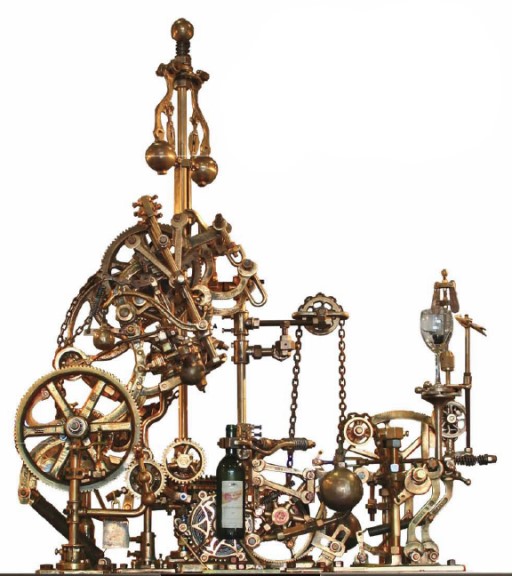Evan Yares
New member
Pro/E is, in the right hands, incredibly capable -- but how well it can handle really interesting machine design problems?
Consider this device:

Here is a video of it.
Believe it or not, it's a corkscrew. A rather Rube Goldbergesque corkscrew, with lots of interesting parts and mechanisms.
If you had to model this machine (with all its kinematics) in Pro/E, how hard would it be?
What parts of it would be challenging?
Where would you need to come up with workarounds?
Where would Pro/E kick-butt compared to other CAD programs?
And how much of the success in doing it would be up to the skill of the user? (That is, would you really need to be a Pro/E wizard to do it right?)
Consider this device:

Here is a video of it.
Believe it or not, it's a corkscrew. A rather Rube Goldbergesque corkscrew, with lots of interesting parts and mechanisms.
If you had to model this machine (with all its kinematics) in Pro/E, how hard would it be?
What parts of it would be challenging?
Where would you need to come up with workarounds?
Where would Pro/E kick-butt compared to other CAD programs?
And how much of the success in doing it would be up to the skill of the user? (That is, would you really need to be a Pro/E wizard to do it right?)
